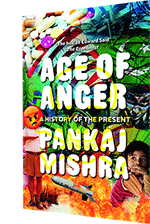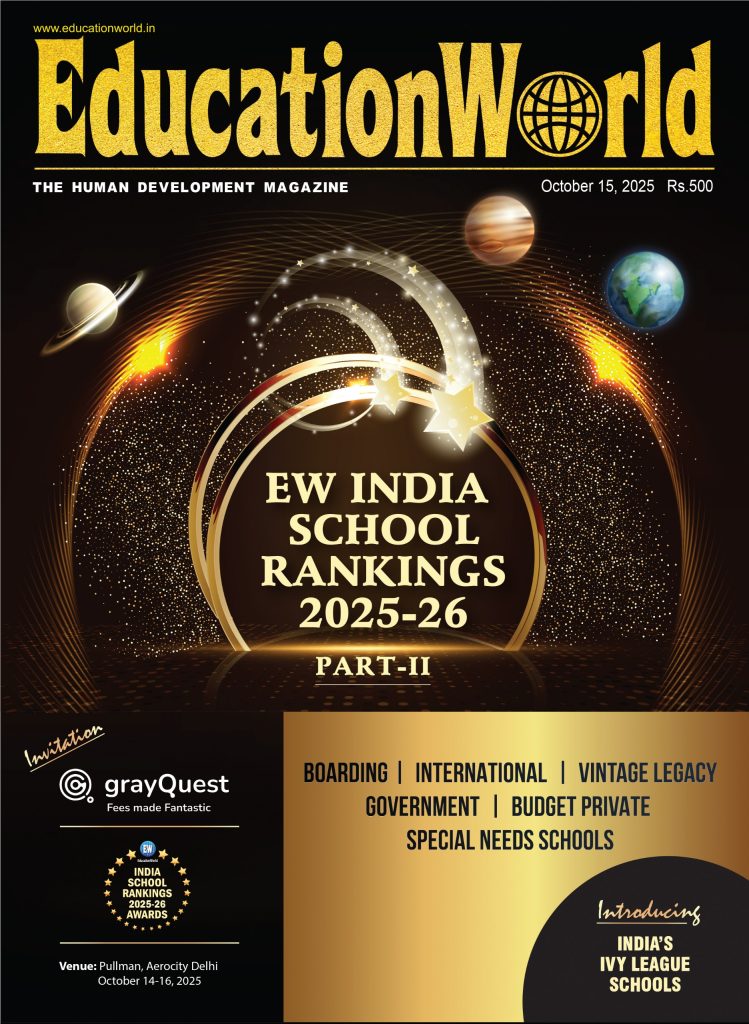Interpretation of hard times
Age of Anger — a history of the present, Pankaj Mishra, Juggernaut books; Rs.699, Pages 373
 In his third book in five years after the path-breaking From the Ruins of Empire (2012) and A Great Clamour (2014) — both reviewed on these pages — under-appreciated London-based Indian émigré writer Pankaj Mishra takes on the task of explaining why a tsunami of irrational rage is sweeping the contemporary world.
In his third book in five years after the path-breaking From the Ruins of Empire (2012) and A Great Clamour (2014) — both reviewed on these pages — under-appreciated London-based Indian émigré writer Pankaj Mishra takes on the task of explaining why a tsunami of irrational rage is sweeping the contemporary world.
The landslide victory of the BJP and Narendra Modi in General Election 2014, election of Donald Trump as president of the US, the Brexit vote in the UK, emergence of xenophobic political parties in Europe, the rise of ISIS and global jihad, anarchy and turmoil in the Middle East, unending conflict in Africa, the reckless nuclear belligerence of North Korea, and election of the thuggish Rodrigo Dueterte as president of the Philippines. All signal an unleashing of mutiny and rage, a universal sentiment of suicidal desperation that has entered the hearts and minds of large swathes of people around the world.
At a time of unprecedented global prosperity when more people than ever before have food, shelter and clothing, cell phones and access to knowledge, information and instant connectivity through the Internet, what’s the explanation behind the tidal wave of anger and fury which could well precipitate a nuclear Armageddon and extinction of the human race?
Through extensive investigation of philosophical and socio-economic currents driving the waves of anger and tumult across the world, Mishra attempts to answer this question in this outstanding work of scholarship with grand global sweep.
The author draws deep from the histories of several nations to demonstrate that anarchic anger and insurrections against the established order are not an exceptional 21st-century phenomenon. Improbable adventurers with no great ideology or agendas have seized the imagination of gullible masses since time immemorial. The book begins by recounting the theatrical posturing of an Italian poet-anarchist Gabriele D’Annunzio, who with a force of 2,000 mutineers captured the city of Fiume on the Adriatic Sea in 1919 with the dream of “rejuvenating Italian manhood through violence”.
According to Mishra this anarchist driven by “sexual appetite and megalomania” became the inspiration of Italian dictator Benito Mussolini and Adolf Hitler, egomaniacs who allied to unleash the most destructive global war in world history.
Mishra traces the origins of the forces of rebellion and rage in the 20th century to the 18th century European age of Enlightenment. Philosophers and economists such as Voltaire, Montesquieu and Adam Smith, among others, proclaimed the philosophy of enlightened self-interest. In a historic departure from the puritan ethic of Christianity, they boldly affirmed that pursuit of the good life is a worthy and socially beneficial goal.
Consequently, the grandees and elites who graced the fashionable salons of Paris emerged as the world’s first proponents of global trade who believed it was incumbent upon them to export French culture and their ideology of enlightened self-interest across Europe. But as the author brilliantly explains, this philosophy was self-serving inasmuch as its benefits were restricted to the mercantile class which was conferred social mobility and co-opted into the ruling class. However, the rise of the new bourgeoisie exacerbated social and economic inequalities in French and francophile European countries, and was fiercely resented by Voltaire’s contemporary — French philosopher Jean-Jacques Rousseau (1712-1778) — who protested the deepening divide between the new conspicuously consuming elites and the masses and soon culminated in the bloody French Revolution of 1789.
The new doctrine and French culture was enthusiastically embraced by the ruling elites of Europe, notably in Russia and Germany. But in turn social and income inequalities in francophile European nations prompted the rise of nationalist movements culminating in the Russian revolution of 1917, and volk nationalism in Germany which mid-wifed the Nazi party. The merit of this compelling study is that it recounts dozens of case histories from around the world which testify that sundry efforts towards globalising trade and commerce for the past several centuries caused sharpening disparities in societies resulting in social fissures, and rampant anger, if not revolt.
A particularly creditable feature of this tome is that it demonstrates a circular pattern in the history of the world with the revolutionaries rising against oppressive self-aggrandising elites quickly becoming corrupted by power and mimicking the lifestyles and oppression of the tyrants they overthrew in the cause of equality and justice. Thus within a few decades, the egalitarian sans culottes of the French Revolution transformed into Bonapartist imperialists, and German volk culture nationalists into blood and iron Prussians and Nazis. As now with the dominant bourgeois elites of the West no longer shackled by moral constraints of Christianity indulging in unrestrained consumerism, there’s a rising tide of anger against globalisation.
Given the Indian origin of the author, the anger and rage currently afflicting the subcontinent is also explained in considerable detail. The Congress party which led the nation to freedom from cruel British imperialism in 1947, soon began mimicking the corruption, oppression and social inequalities of our erstwhile masters. This created an opportunity for the Hindu nationalist BJP to rise to power at the Centre and in several states across the country.
Egged on by the RSS, its shadowy ideological parent, the currently ruling dispensation seems hell-bent upon following the advice of its hero Veer Savarkar to “Hinduize all politics and militarise Hindudom”. This requires cleansing the nation of liberal, “westernised class of bastards” and subjugating the world’s second largest Muslim population. Hard times ahead.
Dilip Thakore
Exploitation exposé
The Adivasi will not Dance, Hansda Sowvendra Shekhar, Speaking Tiger; Rs.399, Pages 189
 Hansda sowvendra Shekhar is a low-profile author from Jharkhand who won the Sahitya Akademi Yuva Puraskar in June 2015 for this collection of ten short stories. This fictional work sketches vignettes of life in remote villages of the Santhal Pargana division of Jharkhand, to bring them to a larger audience.
Hansda sowvendra Shekhar is a low-profile author from Jharkhand who won the Sahitya Akademi Yuva Puraskar in June 2015 for this collection of ten short stories. This fictional work sketches vignettes of life in remote villages of the Santhal Pargana division of Jharkhand, to bring them to a larger audience.
Earlier, these villages fell within the jurisdiction of the Bengal Presidency. Therefore, although in the Bengali fiction of Bibhuti Bhushan Bandyopadhyay and Mahasweta Devi, the daily lives and aspirations of the Santhal adivasis are well-documented, this may be one of the first authentic and original attempts to translate adivasi culture into English.
As a medical practitioner with the Jharkhand government, Shekhar had easy access into tribal homes in the interior enclaves of the Santhal Parganas. This is apparent in the ease with which he intersperses his descriptions and dialogues with the dialect of the santhals, describes their animist religious culture and endows his characters with real identities. The author effectively describes the lives of grief and sorrow, poverty and frustrations of these marginalised communities even in this day and age.
This book has been described as intensely political and the last story from which the collection takes its title narrates the politicisation of Mangal Murmu, who challenges the paternalistic attitude of the establishment which views the Santhal community as exotic, primitive, innocent, voiceless and passive. Mangal’s story provides insights into the lives of Santhals, how they are threatened by the outside world and flagrantly deprived of their arable land, rich mineral reserves and scattered stone quarries without any benefits accruing to them.
This story of Mangal’s village, Matiajore in Pakur district, is replicated in village after village where the diku (intruders) “down generations… have taken advantage” of the country’s Adivasi communities who constitute 8.6 percent of India’s population.
Therefore, when an opportunity presents itself for Mangal, a 60-year-old tribal musician, to perform before the president of India, he mobilises his troupe of singers and dancers for a performance to the rhythm of folk instruments. But even as Mangal prepares for the big occasion with great hope and optimism, he learns about 11 Santhal villages having been forcibly vacated, with protesting tribals being put behind bars, and even entire communities being uprooted and displaced by rich businessmen planning to set up a thermal power plant, threatening community life and custodians of the land. Mangal musters the courage to confront the president with a personal defiance that becomes a testimony to collective resistance by Santhals.
“How can this power plant be good for us? And how can we Adivasis dance and be happy? Unless we are given back our homes and land, we will not sing and dance,” he tells the president. Inevitably, he is brutally beaten up, his troupe shares his victimisation for stating that they aren’t toys that when “someone presses our ‘on’ button or turns a key in our backsides, and we Santhals start beating rhythms…”
The other stories feature tribal women who are wronged and persecuted. They also throw a spotlight on sly exploiters from outside the community, the dikus — babus and zamindars, the kiristans, Mussalmans and Hindus, jawans and policemen — predators waiting to take full advantage of Santhal women in need of money and food.
Though fictional, all the characters in this collection stand out in their cameo roles in stories that depict the harsh realities of the lives of the country’s 6.4 million Santhal adivasis. Their lot is a life of poverty and deprivation that prompts mass seasonal migrations when “villages, entire clans — make up long, snaking processions as they abandon their lands and farms to take the train to Namal, the Bardhaman district of West Bengal and the paddy fields there”. The stories are drawn from the heartland and interiors of nondescript villages such as Adityapur, Godda, Matiajore, Roshpal, Chakulia, Balipur and Sarjomdih which connect with district towns and headquarters such as Ranchi, Dumka, Sahebgunj, Ghatshila and Pakur.
The flavour of adivasi ethnicity and culture is conveyed through the use of minimalistic English peppered with Santhal phrases, words, honorifics and authentic people and place names that tether the fictional to the real world. It is the changing face of the region, the geographical and political realignments in the mineral-rich Chhotanagpur area, the devastating effects of the shift from farming to industrial occupations on indigenous cultures and communities which constitutes the subtext of this poignant narrative. And to this day, the tribal clans of Jharkhand — Sorens, Mundas, Murmus — remain easy prey of politically connected businessmen, adventurers and middlemen, who routinely usurp adivasi rights and property in the proclaimed cause of progress and development.
This book marks the inclusion of marginalised lives into Indian English writing which has largely remained the domain of city-based, English-educated authors whose representation of ‘lesser lives’ has been superficial. Even though it’s published as fiction, The Adivasi Will Not Dance is a revelation of the real intent and chicanery of the establishment whose high sounding rhetoric about development for all, is far removed from practice.
Jayati Gupta















Add comment